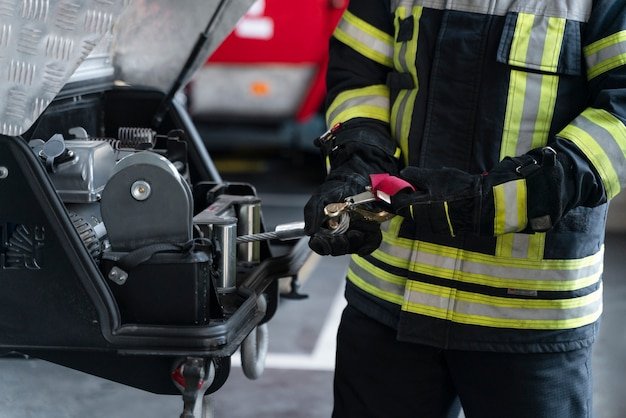Businesses are required by law to undergo fire inspections to ensure the safety of people and property. Fire inspections help identify and manage potential fire hazards. Traditional inspection methods using pen and paper are often slow and prone to mistakes. However, modern fire inspection software has dramatically changed how businesses handle these inspections. This software helps save time, money, and stress while boosting safety standards.
Today’s technology has revolutionized fire safety for businesses. Advancements in early detection systems, automation, AI, and advanced emergency communication have transformed our approach to fire safety. Businesses now use software to enhance efficiency in fire safety鈥攎aking tasks like developing safety plans and responding to emergencies more streamlined and less error-prone. Software systems can detect and flag risks much quicker than humans, allowing for early action. It also stores and organizes essential data, such as maintenance schedules and inspection reports, making information easily accessible and reducing the risk of misplacement. Businesses find that integrating software into their safety protocols significantly improves protection and resource management.
Modern fire inspection software offers numerous features:
– Real-time data collection
– Automated reporting
– Remote access capabilities
These features make the inspection process quicker and more accurate by instantly recording findings and recommendations on-site. Automated reporting reduces paperwork, helping inspectors and fire departments easily access necessary information. Remote access enhances collaboration and boosts productivity, ensuring effective fire inspections and overall safety.
With the rise in frequency and intensity of wildfires, AI and machine learning have become crucial tools in predicting and preventing fire hazards. By analyzing data from various sources, AI algorithms identify patterns that indicate potential fire risks. This technology helps fire agencies track conditions like weather and vegetation, allowing them to take preventive actions such as clearing combustible materials or setting up firebreaks. Combining these technological advancements with human expertise helps minimize fire disasters and save lives.
While essential for regulatory compliance and disaster prevention, traditional fire inspections can be costly and time-consuming. Automated inspections and remote monitoring offer cost-effective alternatives by enhancing accuracy and efficiency. These methods enable quick detection and resolution of fire hazards.
Effective communication is vital for businesses, especially those requiring inspections and regulatory compliance. Fire inspection software includes tools for seamless communication between business owners, inspectors, and authorities. It streamlines processes from scheduling inspections to sharing essential data, ensuring smooth operations and regulatory compliance.
Adopting modern fire inspection software is a smart move for businesses, safeguarding assets, ensuring compliance, and offering advanced features like real-time data collection, automation, remote access, AI, and machine learning. This software streamlines inspections, enables proactive prevention strategies, and creates a safer, more cost-effective environment. Additionally, using the Internet of Things (IoT) in fire safety technology, like smart fire extinguishers and doors with sensors, reflects a proactive approach to mitigating fire risks. Keeping up with these innovations is crucial for maintaining high safety standards and achieving operational excellence.



